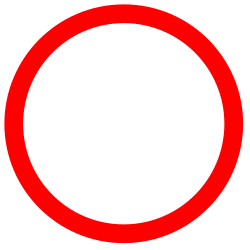Pistolenstern
| Stern Pistolenstern | |||||
|---|---|---|---|---|---|
 | |||||
| Falschfarbenbild von Pistolenstern und Pistolennebel. | |||||
| AladinLite | |||||
| Beobachtungsdaten Äquinoktium: J2000.0, Epoche: J2000.0 | |||||
| Sternbild | Schütze | ||||
| Rektaszension | 17h 46m 15,3s [1] | ||||
| Deklination | −28° 50′ 4″ [1] | ||||
| Helligkeiten | |||||
| Scheinbare Helligkeit | K-Band: 7,1 bis 7,6 mag | ||||
| Spektrum und Indices | |||||
| Veränderlicher Sterntyp | SDOR[2] | ||||
| Spektralklasse | pec. | ||||
| Astrometrie | |||||
| Entfernung | 25,000 Lj | ||||
| Visuelle Absolute Helligkeit Mvis | −10.8 mag | ||||
| Physikalische Eigenschaften | |||||
| Masse | ca. 150 M☉ | ||||
| Radius | 300 – 340 R☉ | ||||
| Leuchtkraft | 1.700.000 L☉ | ||||
| Effektive Temperatur | 14.000 – 21.000 K | ||||
| Alter | ≈ 2.000.000 a | ||||
| Andere Bezeichnungen und Katalogeinträge | |||||
| |||||
Der Pistolenstern ist ein Hyperriese aus dem Quintuplet-Sternhaufen in der Nähe des Zentrums der Milchstraße.
Details
Der Pistolenstern ist ca. 25.000 Lichtjahre von der Erde entfernt und liegt in Richtung des Sternbildes Schütze nahe dem Zentrum der Milchstraße. Er ist ca. 1,7 Millionen Mal so hell wie die Sonne. Eine Beobachtung im sichtbaren Bereich des Lichtes ist nicht möglich, da er von Wolken interstellaren Staubs in der Milchstraßenebene verdeckt wird, andernfalls wäre der Pistolenstern trotz seiner Entfernung als Stern 4. Größe sichtbar. Er wurde erst in den 1990er Jahren vom Hubble-Weltraumteleskop mit Hilfe von Infrarot-Kameras erfolgreich beobachtet.
Der Stern ist mit über 100 Sonnenmassen extrem massereich und strahlt in sechs Sekunden so viel Energie ab wie die Sonne in einem Jahr. Forscher vermuten, dass die Anfangsmasse des Sterns über 200 Sonnenmassen betragen hat. Am Ende seines Lebens in ein bis drei Millionen Jahren wird er vermutlich in einer Supernova explodieren.
Der Stern ist eingebettet in den Pistolennebel, der wegen der Ähnlichkeit seiner Form mit der einer Pistole so benannt wurde. Dieser zirkumstellare Nebel besteht im Wesentlichen aus Materie, die vom Pistolenstern bei heftigen Eruptionen vor 4000 bis 6000 Jahren ausgestoßen wurde und von ihm zum Leuchten angeregt wird. Die Masse des Nebels wird auf etwa 10 Sonnenmassen geschätzt.
Literatur
- Donald F. Figer et al.: High-Resolution Infrared Imaging and Spectroscopy of the Pistol Nebula: Evidence for Ejection. In: Astrophysical Journal 525 (November 1999), S. 759–771, PDF
Weblinks
Einzelnachweise
- ↑ [FMM95] 3. In: SIMBAD. Centre de Données astronomiques de Strasbourg, abgerufen am 6. Februar 2019.
- ↑ V4647 Sgr. In: VSX. AAVSO, abgerufen am 6. Februar 2019.
Auf dieser Seite verwendete Medien
Opaque red circle
Autor/Urheber: IAU and Sky & Telescope magazine (Roger Sinnott & Rick Fienberg), Lizenz: CC BY 3.0
IAU Sagittarius chart
One of the intrinsically brightest stars in our galaxy appears as the bright white dot in the center of this image taken with NASA's Hubble Space Telescope. Hubble's Near Infrared Camera and Multi-Object Spectrometer (NICMOS) was needed to take the picture, because the star is hidden at the galactic center, behind obscuring dust. NICMOS' infrared vision penetrated the dust to reveal the star, which is glowing with the radiance of 10 million suns.
The image also shows one of the most massive stellar eruptions ever seen in space. The radiant star has enough raw power to blow off two expanding shells (magenta) of gas equal to the mass of several of our suns. The largest shell is so big (4 light-years) it would stretch nearly all the way from our Sun to the next nearest star. The outbursts seen by Hubble are estimated to be only 4,000 and 6,000 years old, respectively.
Despite such a tremendous mass loss, astronomers estimate the extraordinary star may presently be 100 times more massive than our Sun, and may have started with as much as 200 solar masses of material, but it is violently shedding much of its mass.
The star is 25,000 light-years away in the direction of the constellation Sagittarius. Despite its great distance, the star would be visible to the naked eye as a modest 4th magnitude object if it were not for the dust between it and the Earth.
This false-colored image is a composite of two separately filtered images taken with the NICMOS, on September 13,1997. The field of view is 4.8 light-years across, at the star's distance of 25,000 light-years. Resolution is 0.075 arc seconds per pixel (picture element).


